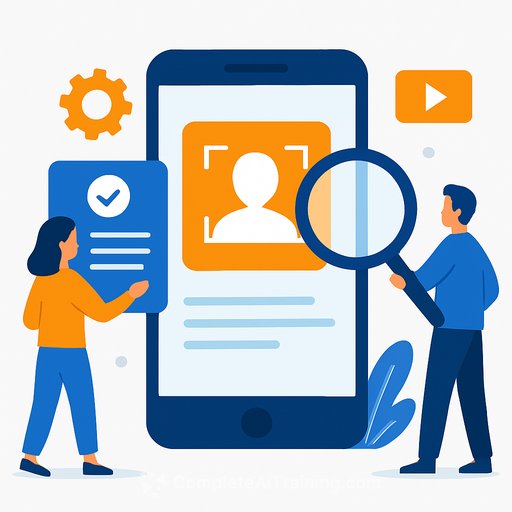A practical blueprint for legal and ethical AI research
Public data is not free data. Researchers working with social platforms run into a triple bind: data protection law treats posts as personal data, copyright protects content and collections, and platform rules add their own limits. Add community norms and vulnerable groups, and the room for error gets very small.
We've already seen what happens when legitimacy is ignored. Members of r/schizophrenia pushed back after learning their posts were used in a study against community rules. A separate project seeded AI-generated content into r/ChangeMyView without disclosure, and the paper was later withdrawn. The takeaway: if people feel blindsided, legal compliance won't save the work.
PETLP: make compliance part of the method
Siân Brooke and Nick Oh introduce PETLP - Privacy-by-design Extract, Transform, Load, and Present. It extends the classic ETL pipeline with a living DPIA and a final stage focused on sharing results, datasets, and models responsibly. The aim is simple: build legal and ethical choices into each decision, rather than bolting them on at the end.
- Extract: Choose collection routes that respect platform terms and IP limits while using lawful research exceptions where they genuinely apply.
- Transform: Apply privacy safeguards early - reduce identifiability during preprocessing, not just at publication.
- Load: Store data securely with clear access controls and audit trails tied to stated purposes.
- Present: Decide what, if anything, can be shared - and how to reduce re-identification and model leakage risks.
- Living DPIA: Treat your privacy impact assessment as a design document you update as methods or outputs change.
Pre-flight checklist before you touch data
- Controller map (GDPR): Identify who decides the purpose and means of processing. If multiple parties decide together, set up a joint controller agreement (Art. 26). If you rely on service providers, put processor terms in place (Art. 28).
- Legal basis: Public universities often rely on public interest (Art. 6(1)(e)). Private organisations should complete a Legitimate Interest Assessment that shows necessity, purpose, and a fair balance of risks. See the GDPR text on EUR-Lex.
- Text and Data Mining (EU):
- Article 3 (research orgs): Exception for TDM that cannot be overridden by contract for qualifying institutions.
- Article 4 (others): TDM allowed unless rightholders opt out; robots.txt and platform opt-outs can block you.
- Reference: EU DSM Directive details on EUR-Lex.
- Pick an extraction route (with trade-offs):
- Platform APIs: Clearer on legality, but rate limits, costs, and filtered fields.
- User-mediated (data donations): Strong on ethics and community trust; still respect platform terms.
- Third-party aggregators: Often breach database rights and ToS; treat as high-risk.
- Self-scraping: Protected for EU research organisations under DSM Art. 3; commercial teams can be blocked under Art. 4 via robots.txt.
- Notification (GDPR Art. 14): If collecting indirectly, inform people unless there is a genuine disproportionate effort. If you rely on that exemption, document why and publish a clear public notice.
- Privacy in preprocessing: Dropping usernames is pseudonymisation, not anonymisation. Plan k-anonymity thresholds or differential privacy where feasible. Keep a record of residual risks.
- Sharing and quoting: Prefer paraphrasing or aggregation. If sharing, consider IDs for controlled hydration, synthetic examples, or secure analysis environments. Avoid raw data releases.
- Model safety: Test for membership inference. Consider DP for smaller models or sensitive corpora. Document allowed uses and known limitations.
Why this matters for research legitimacy
Legal green lights won't fix community backlash. For sensitive spaces - health, identity, trauma - researcher behavior sets the tone. Contact moderators, explain your plan, and adjust methods if the community expects prior approval. Trust costs time, and it's part of the method.
Five actions to ship responsibly this quarter
- Start a living DPIA in your repo. Update it whenever methods, data sources, or outputs change.
- Write a one-pager on your extraction plan: your institutional status, ToS constraints, and DSM Art. 3/4 eligibility.
- Engage target communities before collection. Share your goals and get feedback on consent, quoting, and opt-outs.
- Bake privacy into preprocessing. Set re-identification thresholds and privacy budgets early; don't retrofit later.
- Decide your dissemination policy now. Datasets, models, quotes - what will you release, with what controls, and why?
If your team needs structured upskilling on applied AI practices, explore role-based learning paths at Complete AI Training.
Limitations and next steps
PETLP is a framework, not a turnkey tool. It still takes effort to implement, platform policies keep shifting, and cross-border projects face conflicting rules. We need better benchmarks for privacy vs. utility, data provenance automation, and jurisdiction-specific playbooks.
To make this concrete, the authors are developing RedditHarbor - a proof-of-concept that walks researchers through PETLP choices for Reddit studies. Each platform will require its own playbook, but the principle holds: make privacy, legality, and community legitimacy part of the pipeline from planning to publication.
Further reading
This article draws on the paper "PETLP: A Privacy-by-Design Pipeline for Social Media Data in AI Research," published in the Proceedings of the AAAI/ACM Conference on AI, Ethics, and Society. The framework includes detailed decision trees and implementation guides.
Your membership also unlocks:






